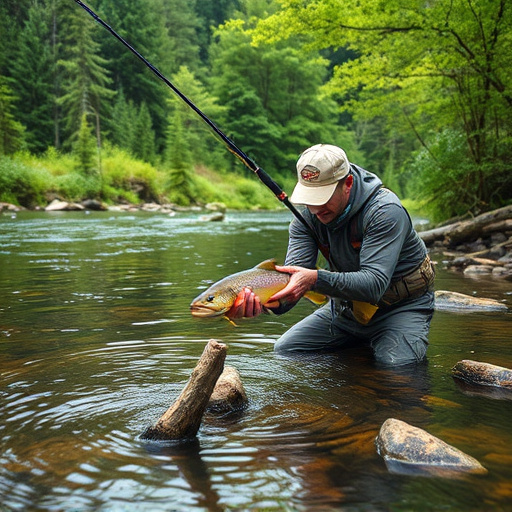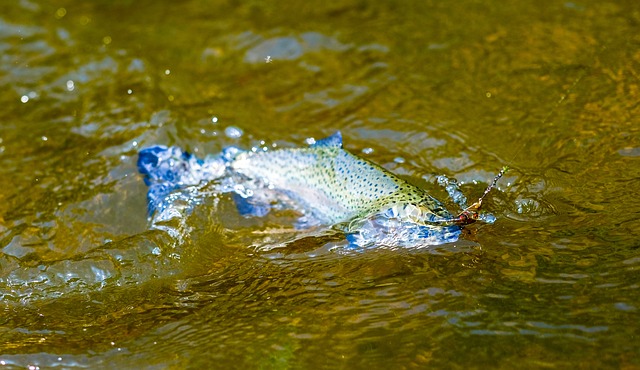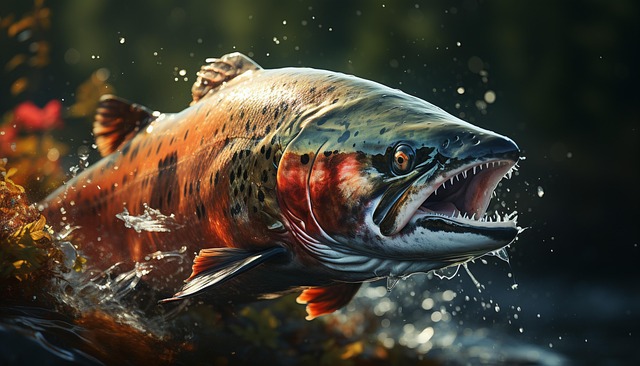Understanding river trout behavior involves recognizing their preference for fast currents, rocks, and undercut banks for hunting prey, with peak activity in dawn and dusk. Key techniques include mimicking flying insects on the surface with flies, selecting appropriate gear (9-foot rod, lightweight reels), mastering casting to place bait precisely, and reading water currents and ripples to locate fish. Fly selection matches environmental conditions and lighting, with size, color, and type tailored to trout behavior and river specifics.
Discover the art of fly fishing for river trout with this comprehensive guide. Learn how to master the techniques that make this sport both challenging and rewarding. From understanding river trout behavior to selecting the ideal gear, casting methods, and choosing the perfect fly pattern based on water conditions, you’ll gain insights to enhance your success in this captivating activity.
- Understanding River Trout Behavior
- Choosing the Right Fly Fishing Gear
- Effective Casting Techniques for Trout
- Reading Water and Selecting the Perfect Fly Pattern
Understanding River Trout Behavior
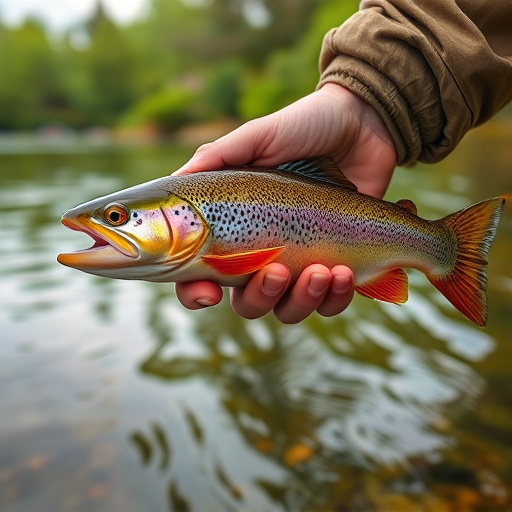
Understanding river trout behavior is key to your success in fly fishing. River trout, like all fish, are driven by their instinct to feed and survive. They often dwell in areas with fast-moving currents, behind rocks or undercut banks, where they can ambush prey. During certain times of the day, such as early morning or late afternoon, river trout tend to be more active as they search for food. They are particularly attracted to flying insects that land on the water’s surface, so observing the behavior of these insects and mimicking them with your fly is crucial.
Knowing their preferred habitat and feeding patterns allows you to cast your line in strategic locations. By using light lines and precise casting techniques, you can present your fly as a natural food source without scaring the trout away. River trout are selective feeders, so be prepared to experiment with different fly patterns and sizes until you find what works best for that specific stretch of river and time of year.
Choosing the Right Fly Fishing Gear
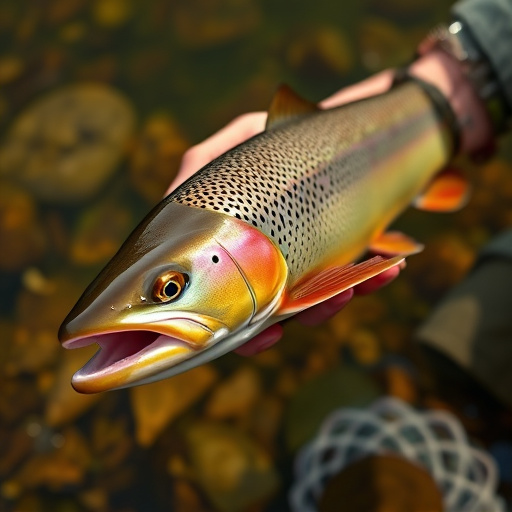
When it comes to river trout fishing, choosing the right fly fishing gear is essential for a successful and enjoyable experience. Select a rod that matches your skill level and the type of casting you plan to do. For beginners, a 9-foot, medium-flex rod is often recommended as it offers a good balance between power and precision. More experienced anglers might opt for a longer, stiffer rod to handle heavier lines and flies more effectively.
For reels, consider those designed specifically for fly fishing, typically made of lightweight materials like graphite or carbon fiber. Choose one with a smooth drag system to facilitate the delicate presentation of your fly. Lines should be weighted to match the river current, usually in the form of floating (for slower currents) or sink-tip (for faster waters). Don’t forget to select a variety of flies tailored for trout, considering both dry and wet patterns suitable for different river conditions.
Effective Casting Techniques for Trout
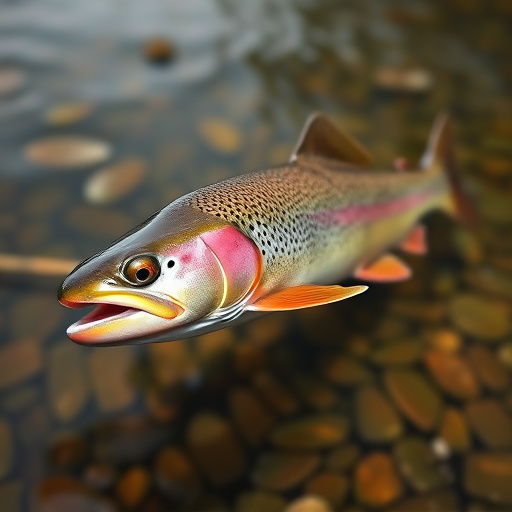
In river trout fishing, mastering effective casting techniques is key to successfully enticing these elusive fish. Start by learning the basic cast types like the backcast and forward cast. The backcast, initiated with a smooth, powerful pull of your rod, allows you to set up the line for the forward cast, ensuring precise placement on the water. Mastering this technique enables you to cover more ground without scaring the trout.
For river trout, precision casting is crucial. Focus on short, accurate casts initially, aiming for specific pools or riffles where trout are known to congregate. As you gain confidence, work on longer casts, using the river’s current to your advantage. Practice regularly and observe how different line weights and lengths affect your cast distance and accuracy. This will not only enhance your fly fishing experience but also increase your chances of catching a trophy trout in the process.
Reading Water and Selecting the Perfect Fly Pattern
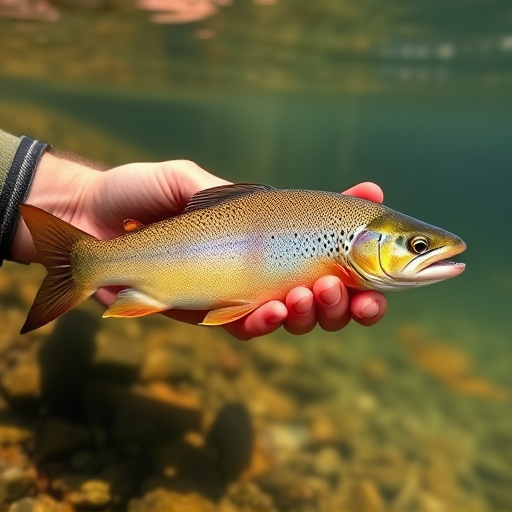
Reading water is a crucial skill in river trout fishing, as it allows anglers to understand where fish are likely to be holding and feeding. By observing the current’s flow, ripples, and eddies, you can identify productive areas. Look for changes in water depth and velocity; these variations often attract trout seeking food. Different fly patterns entice trout depending on the conditions. For clear, fast-moving streams, select lightweight, delicate flies that imitate small insects. In contrast, for murkier waters with slower currents, opt for more visible patterns mimicking larger prey like leeches or scuds.
Selecting the perfect fly pattern involves matching the size, color, and type to the environment and fish behavior. Pay attention to the time of day; certain flies perform better during specific lighting conditions. For instance, bright, flashy flies can be effective early morning or late evening when light levels are lower, while more naturalistic patterns might be preferred during the daylight hours when trout are more selective. Understanding these nuances will enhance your river trout fishing experience and increase your chances of a successful catch.
Fly fishing for river trout is a captivating art that combines precision, patience, and a deep understanding of aquatic life. By mastering techniques like reading water, selecting the right gear, and choosing effective casting methods, anglers can enjoy successful—and sustainable—interactions with these remarkable fish. Whether you’re a seasoned pro or a beginner, embracing the challenge of river trout fishing promises unforgettable moments amidst nature’s beauty.
